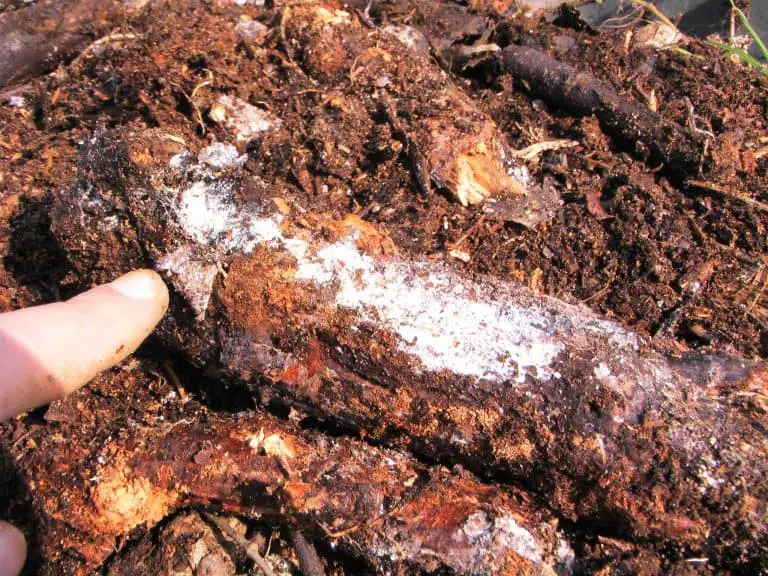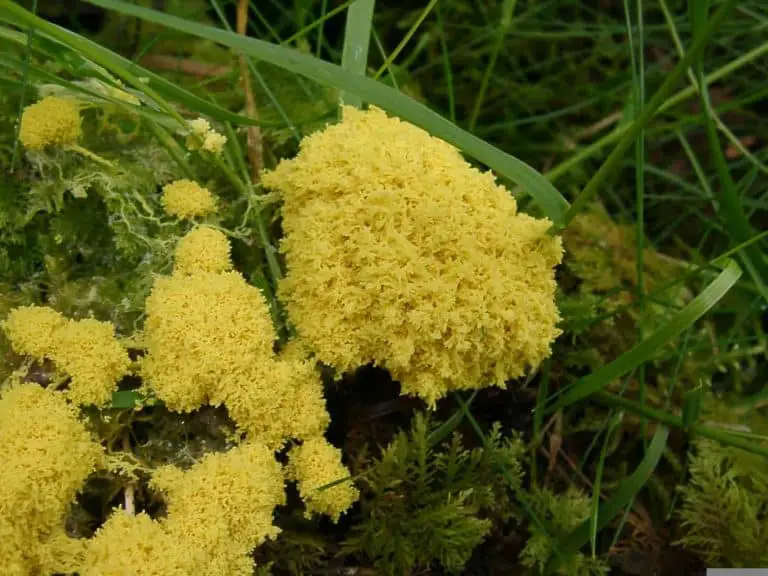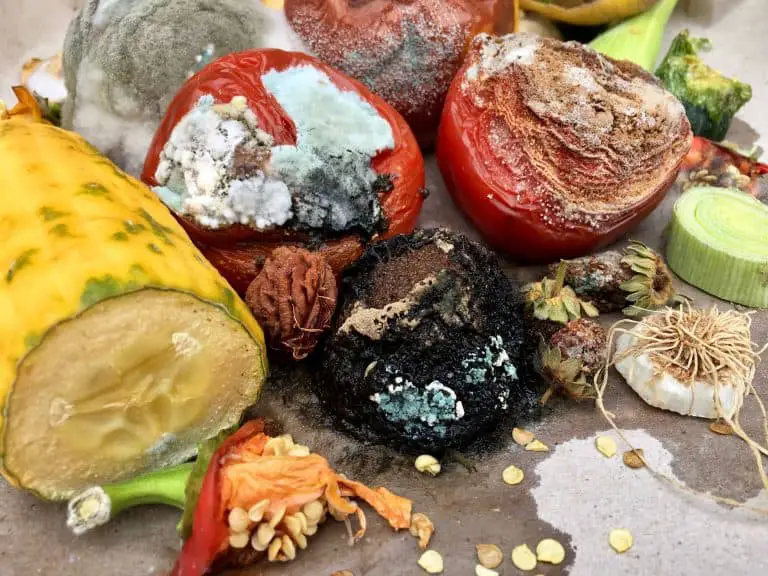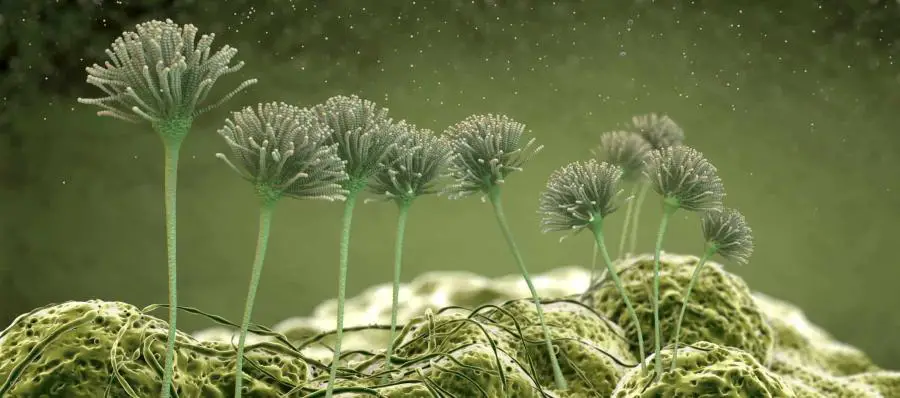Usually, when something starts going moldy it’s a cause for concern. So it’s natural to be a bit worried if you spot some mold in your compost bin.
But don’t worry. Mold is a frequent occurrence in compost and is actually more of a good sign than a bad sign. The only time mold might indicate that something’s wrong is if your compost also smells.
Is mold bad for compost?
No, mold is not bad for compost. Most of the time, mold in compost is a great sign. It indicates that you have healthy compost.
The organic matter in your compost pile is broken down by a mixture of microorganisms, including bacteria and fungi. Molds are a type of fungus, and their presence means that the microbes are doing their job.
Types of mold in compost
Compost mold can come in a variety of shapes, sizes, and colors. Two common types of mold that appear in compost piles are actinomycetes and slime mold. We’ll explain how to identify each of these below.
What’s the white ash-like stuff in my compost?
White residue in your compost pile is probably not mold, but rather a build-up of actinomycetes.
Actinomycetes look like fungi but are actually a type of bacterium.
They appear either in the later stages of the composting process, or at the peak of hot composting. When you spot them during the hot composting stage it can be easy to mistake the white dust for ash.
But don’t worry, it’s HIGHLY unlikely to be ash.

Actinomycetes grow in long threads and are often described as looking like spiderwebs.
They are very useful to have in your compost pile because they can break down tough fibrous structures like cellulose and lignins, which other bacteria find hard to do. They’re a sign your compost is successfully decomposing the tough material.
Woody elements and newspapers are particularly high in lignins.
You’ll often see actinomycetes in manure compost too, where they help digest fats and proteins.
Since they work on the woody elements in compost, actinomycetes are often credited with giving compost its distinctive earthy smell and distinctive deep brown color.
If you spot them in your compost you don’t need to do anything. You can continue to compost as normal. You can mix the actinomycetes in with the compost if you wish.
Why do I have bright yellow mold in my compost?
The first time I saw a patch of bright yellow mold in my compost, it freaked me out.
After a bit of research, I found out that it’s what’s commonly known as dogs vomit slime mold (Fuligo sepitica is the scientific name) and entirely harmless for compost.

Slime mold is the name of the microorganism family the spores belong to, and dogs vomit is likely due to it’s perceived appearance.
Slime molds thrive in dark, damp areas where there’s a lot of decaying organic matter. In other words, a compost pile.
The mold primarily exists in a spore state but turns into a bright yellow bloom during the reproduction phase of its life cycle. The patch will then turn from yellow to brown before disappearing again.
Slime molds have a very short life cycle, and they may only be visible on your compost for a few hours or days. If you don’t check your compost regularly, the slime mold might come and go without you even noticing.
Smelly sludgy mold in compost
The only time mold in compost is a bad thing is when it’s accompanied by a bad smell, pests, or just general sludginess. These are all signs that your compost pile doesn’t have enough oxygen and has turned anaerobic.
Either:
- The compost is too wet
- You’ve added too many greens and not enough browns to the pile
- The compost has become too compacted
- Your compost bin doesn’t have a sufficient aeration system
To fix the issue, turn your compost to help add oxygen into the pile and break up any clumps or compost balls that have appeared. Then make sure you have sufficient browns in the mix. Brown materials such as shredded leaves or paper help to soak up excess moisture and stop the pile becoming soggy.
If you’re using a homemade bin, check that there’s enough aeration or drainage holes. If you’re not sure, drill a few more. Compost piles can never be too aerated.
For more information on how to fix a smelly compost bin, check out our troubleshooting guide.
Can I put moldy food in my compost bin?
Yes, you can put moldy food scraps in your compost bin or in your worm bin. Avoid putting already moldy foods in your bokashi bin though. You can find out why in our guide to bokashi composting.

Putting moldy food in your compost can even be beneficial. Since you’re adding fungi, which will be an active microorganism in your bin, you can think of it as inoculating the compost.
Mold is the first stage in the decomposition process of food waste, so moldy food will break down faster than fresh food.
When adding moldy food, remember to put it as near to the middle as possible, where the compost is hottest. Don’t forget to cover it completely with a brown material.
The only moldy things you should avoid putting in your bin are meat fish and dairy. This is because they are likely to cause a bad odor and attract rodents and pests.
Is mold in my compost dangerous?
While mold in your compost is a good thing, you should be careful when handling it. Mold spores are all around us, and we’re constantly breathing them in. At low levels, they pose no risk. But if you breathe in large quantities of fungal spores, they can be irritating, especially if you’re sensitive to mold or suffer from asthma.
In very very rare cases (we found one documented case), inhaling mold spores from compost has been fatal.
A study by Millner et al. (1980) showed that mold spore levels around compost increase when you’re turning it.
The average person won’t notice any adverse reaction after turning their compost. But to be safe, we would recommend wearing a mask or covering your face when you’re turning compost that has a lot of mold growing in it.
The Minnesota Pollution control agency suggest to avoid turning compost on windy days and to spray the compost with water before turning it to reduce the number of mold spores that get released.
Consuming mold can be dangerous for pets, so make sure to keep them away from your compost heap. If your dogs are anything like mine, then they’ll eat everything they can get their paws on – even moldy scraps!
When the decomposition process is finished, the mold will disappear because there’s no longer any organic matter for it to live on. Therefore, there’s no issue with using compost that was moldy anywhere in your garden, including in your vegetable patch.
Summary
Now you know not to panic when you see mold in compost, but to celebrate because it means your waste will soon turn into a big pile of nutritional, ready to use compost!
